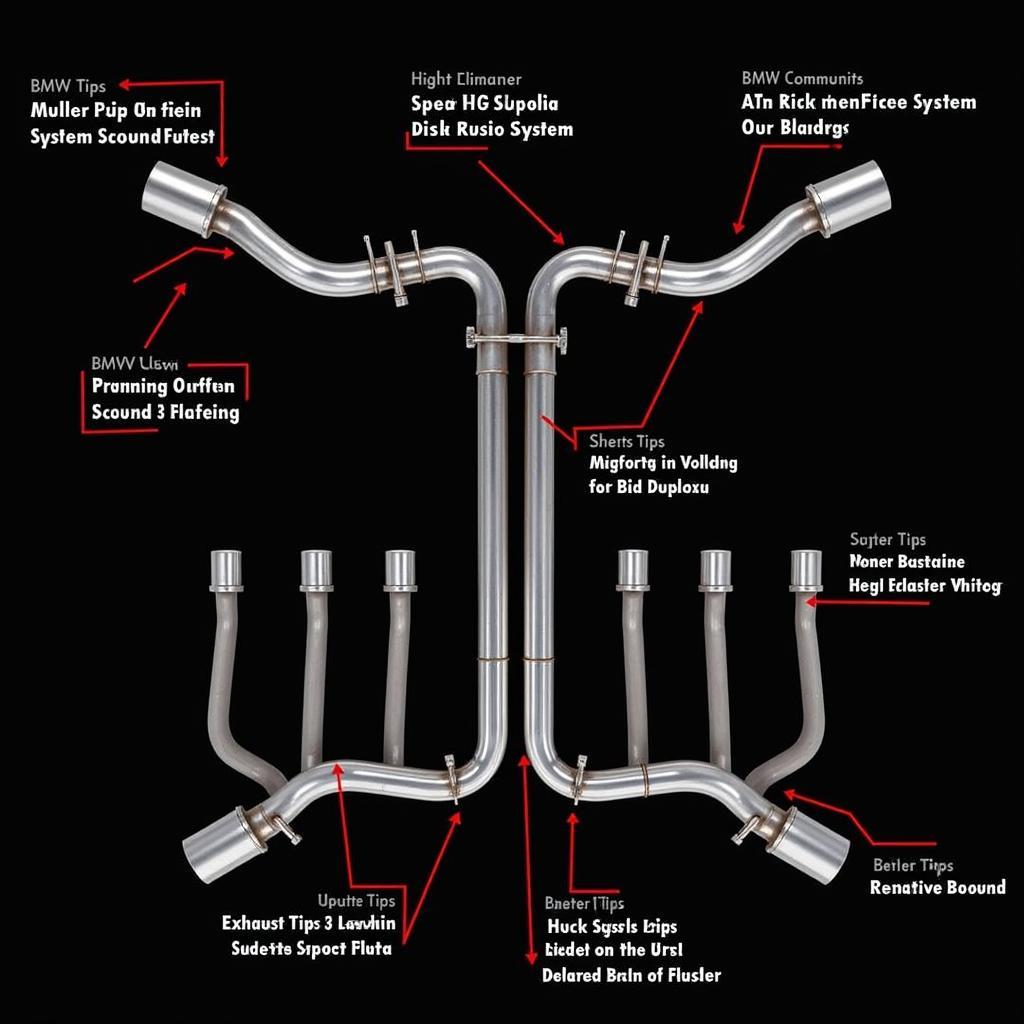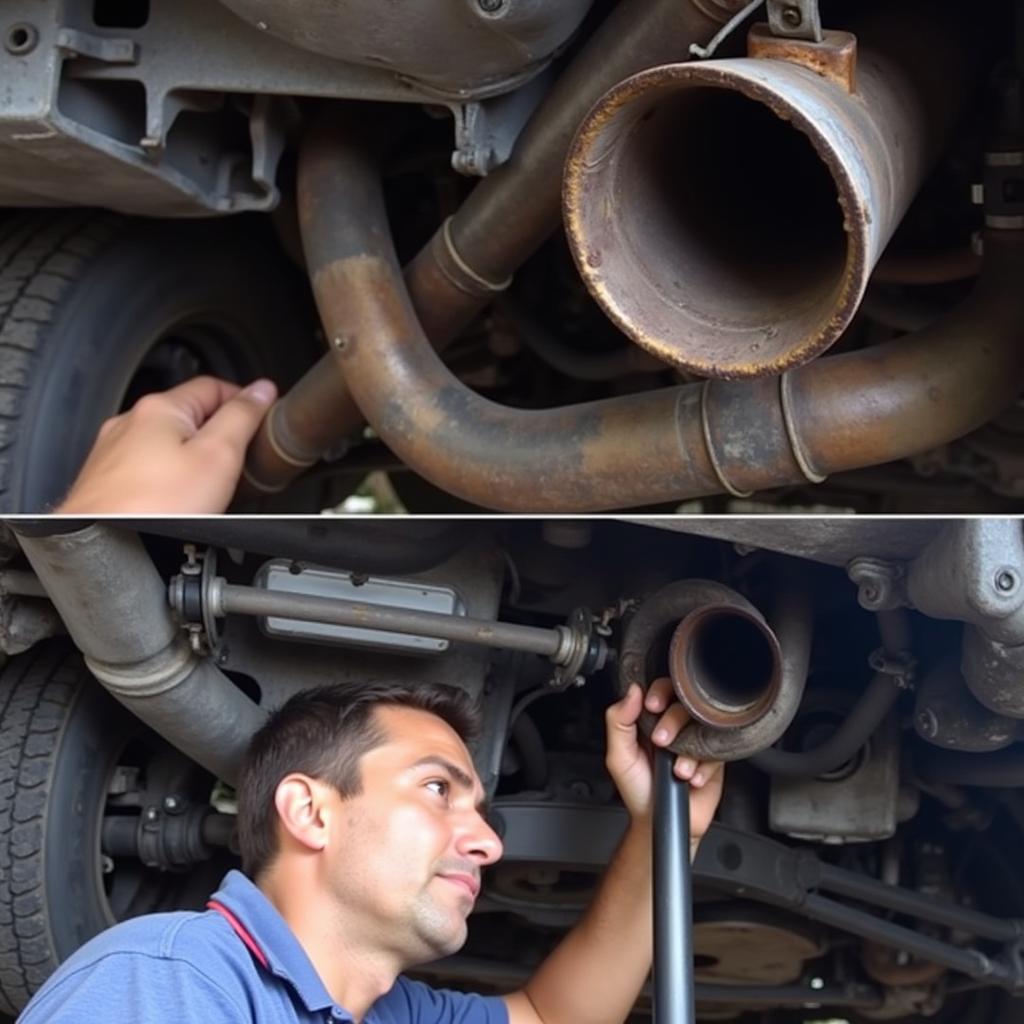The roar of a BMW M5 V10 engine, often likened to the scream of an F1 car, is an iconic sound in the automotive world. This article delves into the engineering marvel behind the bmw m5 v10 f1 sound, exploring its origins, unique characteristics, and the reasons for its enduring appeal among car enthusiasts.
Unveiling the Magic Behind the BMW M5 V10 F1 Sound
The heart of the legendary sound lies in the S85 engine, a naturally aspirated 5.0-liter V10 powerhouse. Unlike most V10 engines, which typically have a 72-degree bank angle, the S85 boasts a unique 90-degree configuration. This, combined with a high-revving nature reaching up to a screaming 8,250 rpm, contributes significantly to the distinctive bmw m5 v10 f1 sound. The individual throttle bodies, one for each cylinder, provide instantaneous throttle response and add to the engine’s aural character. This meticulous engineering resulted in an engine that not only delivered exhilarating performance but also produced a soundtrack that resonated with driving enthusiasts.
Why Does the BMW M5 V10 Sound Like an F1 Car?
The comparison to an F1 car stems from the high-pitched wail produced at higher RPMs. This is a direct result of the engine’s design, particularly the high redline and the individual throttle bodies. The 90-degree V10 configuration also contributes to the unique sound characteristics, differentiating it from other V10 engines. The firing order of the cylinders plays a crucial role in shaping the acoustic signature, creating a harmonic symphony reminiscent of Formula 1 cars. While not identical to an F1 engine’s scream, the similarities are striking enough to earn the BMW M5 V10 its reputation.
“The S85 isn’t just an engine; it’s an instrument,” says renowned automotive engineer, Dr. Hans Zimmerman. “Its sound is a carefully orchestrated composition of mechanical precision and high-performance engineering.”
Maintaining the BMW M5 V10’s Sonic Signature
Preserving the distinct bmw m5 v10 f1 sound requires meticulous maintenance. Regular oil changes with high-quality synthetic oil are essential, as is using the correct oil filter. Proper maintenance ensures the engine operates at peak performance, preserving its unique acoustic characteristics. Ignoring maintenance can lead to performance degradation and a muted sound.
 BMW M5 V10 Exhaust System Components
BMW M5 V10 Exhaust System Components
Experiencing the BMW M5 V10 F1 Sound
While words can describe the sound, nothing compares to hearing it firsthand. Videos online offer a glimpse, but the true experience lies in hearing the engine roar in person. Whether at a track day, car show, or simply driving by, the bmw m5 v10 f1 sound is an unforgettable auditory experience. It’s a testament to a golden era of naturally aspirated engines and a symbol of BMW M’s commitment to performance and driving pleasure.
“The first time I heard a BMW M5 V10 at full throttle, I was hooked,” recalls automotive journalist, Amelia Carter. “It’s a sound that gets under your skin and stays with you.”
Conclusion: The Enduring Legacy of the BMW M5 V10 F1 Sound
The bmw m5 v10 f1 sound remains a highly sought-after auditory experience in the automotive world. Its distinct characteristics, born from a unique combination of engineering ingenuity and performance-driven design, solidify its place as an automotive icon. This sound represents a unique period in automotive history, a time when naturally aspirated engines reigned supreme.
FAQ
- What engine is in the BMW M5 V10? The S85 5.0-liter V10.
- What is the redline of the S85 engine? 8,250 rpm.
- Why does it sound like an F1 car? High-revving engine with individual throttle bodies and a unique firing order.
- How can I maintain the sound? Regular oil changes and proper maintenance.
- Where can I hear the sound? Online videos, track days, car shows.
For further assistance, contact us via Whatsapp: +1 (641) 206-8880, Email: CARDIAGTECH[email protected] or visit us at 276 Reock St, City of Orange, NJ 07050, United States. We have a 24/7 customer support team.

